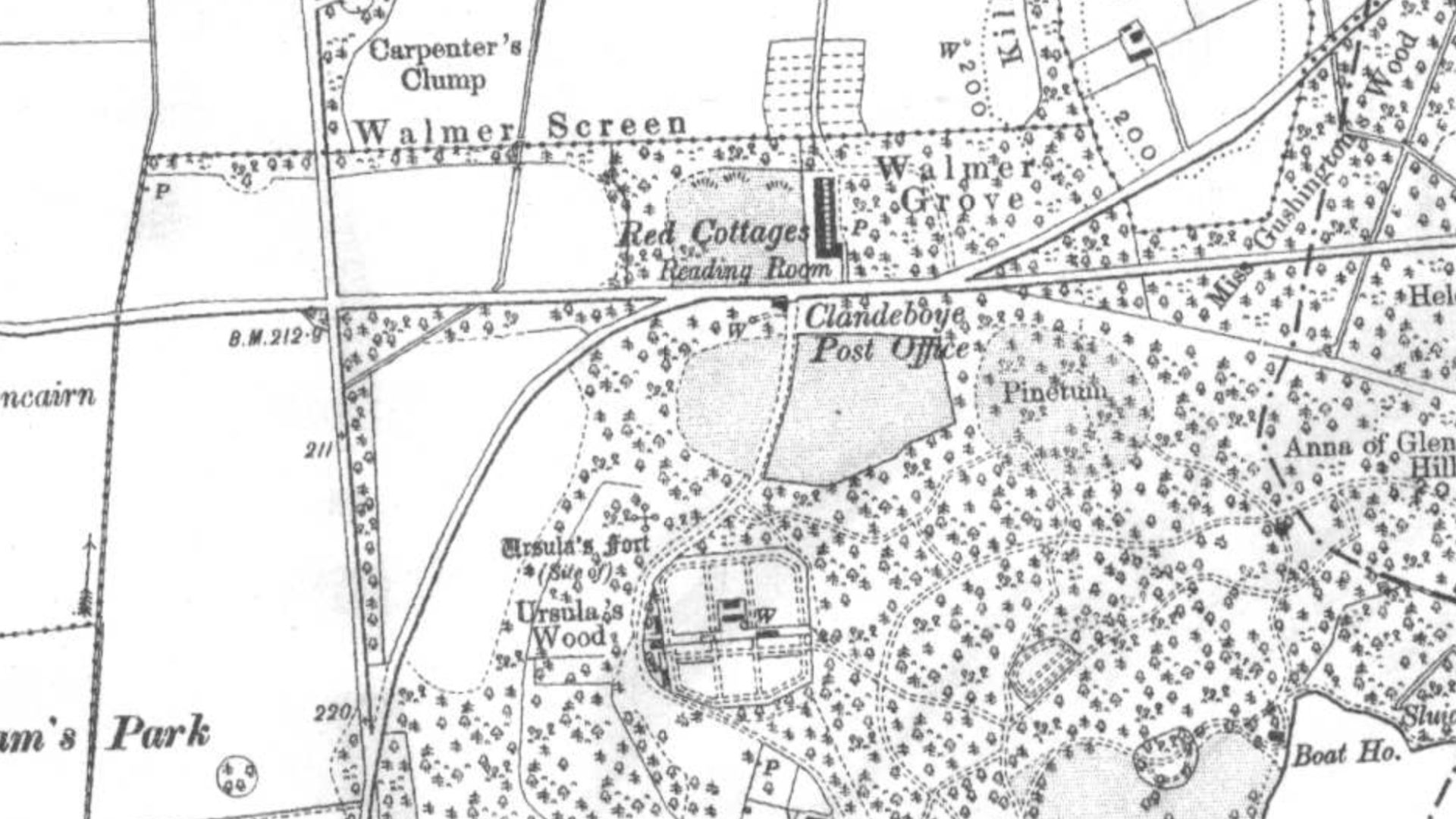During the Second World War, the United States Army established Depot O-621 at Pinetum Camp on the grounds of the historic Clandeboye Estate in Co. Down.
Clandeboye Estate is a 2,000 country estate comprised of woodland, formal gardens, a lake, and 250 hectares of farmland. First settled in 1674, it lies on the outskirts of Bangor, Co. Down and takes its name from the former Gaelic territory of Clandeboye. Lord Dufferin and Ava built the grand Helen's Tower within the estate in memory of his mother Helen, Lady Dufferin. Following The Great War, the tower took on an added poignancy.
The estate saw extensive use as a training ground before and during the conflict. 36th (Ulster) Division in particular took part in manoeuvres there before departing for France. Many of those men who died during the Battle of the Somme in 1916 are commemorated at Thiepval. The Ulster Tower memorial there is an almost identical replica of that at Clandeboye.
The United States Army activated Depot O-621 at Pinetum Camp, Bangor, Co. Down on 29th November 1943. On that date, 944th Motor Vehicle Distributing Company under Captain Ewen J. Cameron (0275252) arrived from England with its own stock of around 60 vehicles. Within 24 hours, the newly established camp was making vehicle issues to units across Ulster. Before the arrival of this American unit, comprising 4 officers and 160 enlisted men, Pinetum Camp had not been occupied for over nine months. An further 10 enlisted men from replacement depots were attached unassigned to Pinetum for training.
There were 37 adequate buildings in place although most required plumbing, electricity, and much needed coats of paint. A detachment of around 30 men of 202nd Engineer Combat Battalion assisted with bringing the camp up to scratch. This took a month and included the installation of a centrifugal powered gasoline pump to replace an old hand pumping system. The existing buildings were repurposed for use as a shop, a mess hall, barracks, and office use.
The vehicle park proper was located on the rural estate of Lord and Lady Dufferin, and it was necessary to gradually “improve” the wooded roads and storage areas before they would stand the constant traffic of heavy military vehicles. In order to control this damage and avoid miring vehicles in the mud holes produced by steady traffic, it was found necessary to hard-surface certain of the roads and storage areas with crushed rock. Ten thousand five hundred tons of material were hauled from the Scrabo Mine near Newtownards, a round trip of about 12 miles, and from Ballyvester Mine, almost twice the distance.
OSNI Historical Fifth Edition (1919-1963) showing the location of the Pinetum on the Clandeboye Estate.

During its time of operation between November 1943 and February 1944, a total of 6,839 vehicles were received at Depot O-621 while 5,886 were issued.
| Date | Received | Issued |
|---|---|---|
| November 1943 | 321 | - |
| December 1943 | 3,363 | 3,093 |
| January 1944 | 1,842 | 1,837 |
| February 1944 | 1,313 | 956 |
At any given time, around 300 general purpose, special purpose, and combat vehicles were available at Pinetum Camp. When bicycles, motorcycles, and trailers were included, the number rose to almost 1,000. All vehicles first arrived in England before shipment to Northern Ireland where they would arrive at Dufferin Dock in Belfast, Larne Harbour in Co. Antrim or in Bangor, Co. Down. Most that arrived at the harbour in Larne were “ready to roll”. The depot at Pinetum Camp offered the facility to store and handle around 1,000 wheeled vehicles in total. It never reached capacity.
Helen Selina Blackwood-Price, the Lady Dufferin in whose memory the tower was built was a poet and ballad writer of note. Among her more famous works were ‘Bay of Dublin’ and ‘Terence’s Farewell’. However, it was ‘The Lament of the Irish Emigrant’, which proved popular with American GIs during their time in Ulster.
Since the arrival of American troops in this country, music shops throughout the province have received many requests for the words and music of that lovely song ‘The Lament of the Irish Emigrant’. In most cases the words have been supplied, but it is more difficult to meet the request for the music, as this seems to have been out of print for some considerable time.
One American soldier who obtained a rare copy of the sheet music wrote a lengthy parody, which began as follows.
I’m lying’ in my bunk, Mary
While the rain pours down outside
And oh, I wish that I were back
Where the skies are blue and wide.They say the sun shines here sometimes
And then Ulster looks her best
But my heart will ever be with thee
In the prairies of the west.